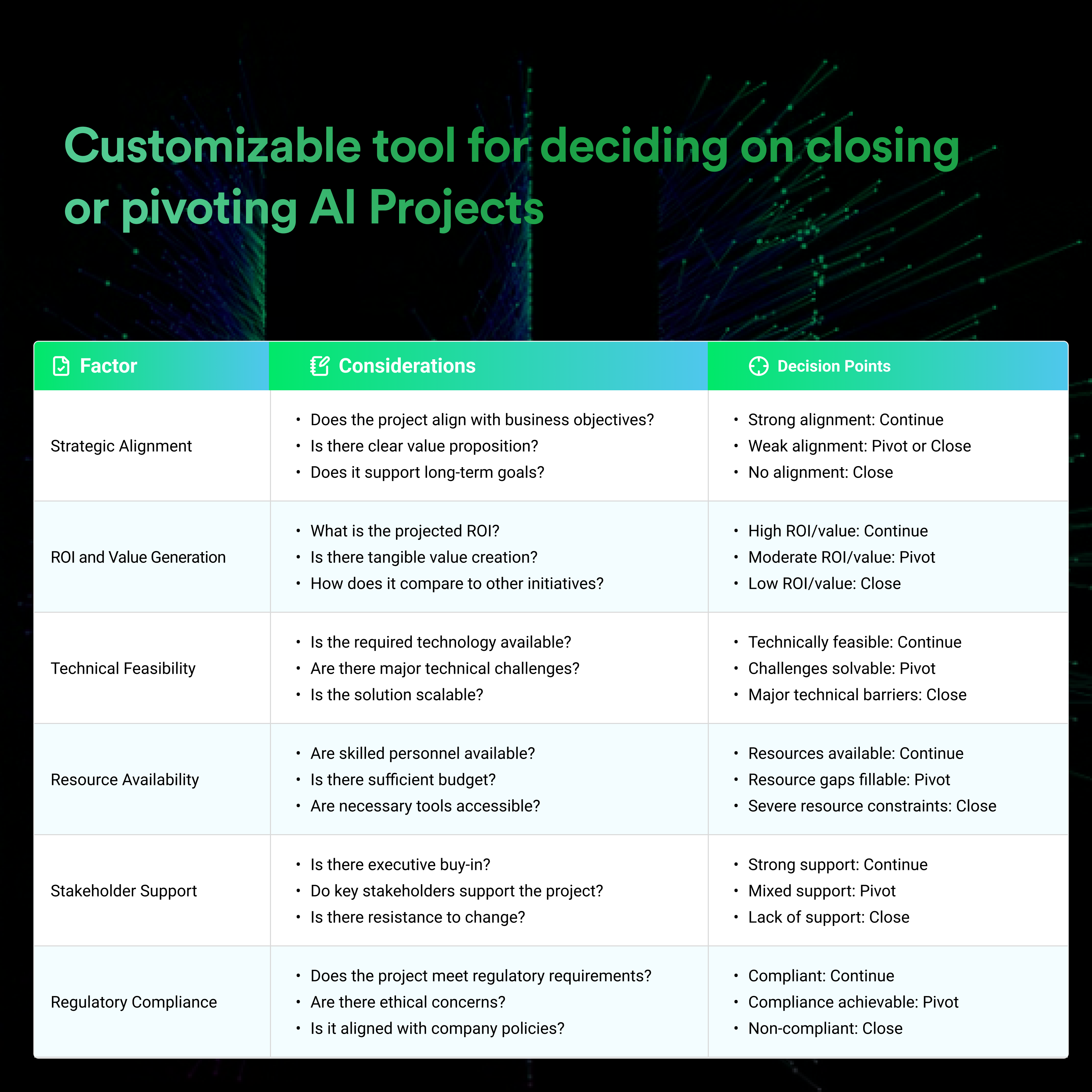As organizations increasingly invest in AI to drive innovation and gain a competitive edge, many find themselves facing unexpected challenges that hinder success. While AI holds transformative potential, the journey from concept to implementation is often fraught with obstacles that can derail even the most promising projects. For decision makers and pioneers in AI, understanding these common pitfalls is crucial to maximizing the value of their initiatives. From setting realistic expectations and managing resources to ensuring collaboration and securing talent, this section explores the primary reasons why AI projects fail and offers insights on how to navigate these challenges effectively.
Unrealistic Expectations and Poor Planning
One of the most pervasive issues AI budget holders face is the need for more alignment between their expectations and AI’s practical capabilities. Organizations often launch AI projects expecting swift, transformative outcomes, only to face complex technical and operational challenges. Vague project objectives and a lack of measurable goals can exacerbate these challenges. Without clear objectives, teams may struggle to align on success metrics, making it difficult to determine whether the project is on track or valuable.
Further complicating matters is the reality of data preparation, which is both time-intensive and resource-heavy; many organizations underestimate the effort required to clean, label, and assess data quality accurately. Additionally, ethical considerations—such as potential biases in data or models—are frequently overlooked, leading to unintended consequences and compliance risks. These elements highlight the need for meticulous upfront planning, clear goal setting, and a grounded understanding of AI’s capabilities and limitations.
Underestimating Costs and Resource Allocation
Financial planning for AI initiatives is often based on incomplete cost projections, especially regarding data-related expenses. The hidden costs of data acquisition, cleaning, and labeling are frequently underestimated, leading to budget overruns and, sometimes, stalled progress. Additionally, specialized talent such as data scientists, machine learning engineers, and domain experts are essential for successful AI deployment. However, the cost of hiring or training such skilled personnel is significant, and the demand for talent far exceeds supply, making skilled labor both costly and challenging to secure.
Beyond talent, AI projects require substantial ongoing investments in infrastructure for data storage, processing power, and model maintenance. These operational costs continue throughout the AI model’s lifecycle, as retraining and monitoring are essential for maintaining accuracy and relevance. When organizations neglect these resource needs, projects quickly face scalability issues, high costs, and potential failure.
Lack of Agility and Adaptability
The rapid pace of AI advancements means that flexibility is crucial, yet rigid project plans constrain many AI budget holders. The “fail-fast” philosophy is critical to AI, where incremental improvements and learning from early mistakes can dramatically increase a project’s chance of success. However, some organizations are slow to adapt and follow a fixed roadmap despite evolving insights or changing requirements.
Furthermore, resistance to adopting new tools, methodologies, and workflows can inhibit a team’s ability to respond dynamically to challenges. Communication barriers within AI teams often add another layer of complexity, resulting in disjointed efforts and misaligned goals. To foster agility, organizations must promote collaboration across departments, support iterative development, and prioritize adaptability in their project management approach. Without these elements, teams will experience inefficiencies, escalating costs, and project stagnation.
Limited Change Management and Employee Buy-In
A successful AI project often depends on organizational support and the willingness of employees to adapt to new tools and processes. However, many organizations overlook the importance of change management and fail to secure employee buy-in, leading to resistance and limited engagement. Without clear communication, training, and incentives, employees may view AI as a threat to their roles, potentially hindering the project’s success. Addressing this challenge requires early involvement of key stakeholders and ongoing support throughout the project.
Data Privacy and Security Risks
With the increasing amount of sensitive data used in AI projects, data privacy and security have become critical concerns. AI models often require access to large datasets, which may contain sensitive or personally identifiable information (PII). Organizations that neglect robust data protection protocols risk data breaches, legal liabilities, and reputational damage. Ensuring compliance with data privacy regulations like GDPR or CCPA, and implementing data encryption and access controls, are essential steps to safeguarding both data and trust.
Poor Data Quality and Lack of Infrastructure to Manage It
Data is the foundation of AI, yet many organizations struggle with poor data quality and lack of infrastructure to manage it effectively. Low-quality data, which might be incomplete, outdated, or inconsistent, compromises model accuracy and can lead to unreliable outcomes. Additionally, without a robust data management infrastructure, it becomes challenging to store, organize, and retrieve data efficiently. Implementing scalable data infrastructure is vital for AI initiatives to maintain performance and accuracy over time.
Lack of Collaboration Across Teams
AI projects often require collaboration between data scientists, domain experts, IT, and business units. However, organizations frequently encounter challenges in fostering effective communication and collaboration among these teams. Silos create inefficiencies, leading to misunderstandings, misaligned objectives, and delayed project timelines. Cross-functional collaboration, supported by clear communication channels and shared objectives, is crucial for AI initiatives to succeed.
Lack of AI Talent
The demand for AI expertise far outpaces supply, making it difficult for organizations to secure skilled professionals like data scientists, machine learning engineers, and AI specialists. This talent shortage limits an organization’s ability to execute and scale AI projects effectively. Training existing employees and fostering partnerships with academic and research institutions can help bridge this talent gap, but it requires significant time and investment.







